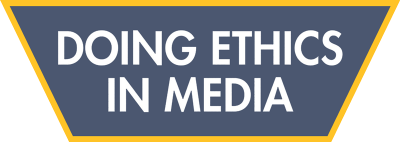By Leila Beem Núñez
Charlie Hebdo is no stranger to controversy. In 2006, the French satirical magazine enraged many in the Muslim world when it republished cartoons of the Prophet Muhammad. In 2011, its offices were firebombed and damaged after publishing content of a similar nature. In January of this year, the consequences for its irreverence were fatal, when two Al-Qaeda affiliated gunmen stormed the office during a weekly editorial meeting and killed 12. Eight of the publication’s journalists were left dead. One of these was editor-in-chief Stéphane Charbonnier.
But Charlie Hebdo continues in its mission of free speech quite undeterred.
Today it is under fire and scrutiny for its recent publication of cartoons satirizing Europe’s current handling of the migrant crisis. One of the cartoons in particular has drawn perhaps the most public ire, depicting the body of Aylan Kurdi, the 3-year-old Syrian refugee who drowned off the coast of the Greek island of Kos earlier this month. Stark photographs of the child’s lifeless body in the sand circulated through the world’s media outlets, raising questions as to the ethics of publishing such a graphic and disturbing image.
In Charlie Hebdo’s recent cartoon, a lifeless baby – presumably that of Kurdi – lies facedown in front of a McDonald’s-style billboard that promotes “two children for the price of one.” The caption of the cartoon read, “So close to his goal.” Outrage ensued, especially evident on social media. In one response, Peter Herbert, chair of the Society of Black Lawyers, tweeted that the publications constituted “an incitement to hate crime and persecution before the International Criminal Court,” as reported by Al Jazeera.
“Charlie Hebdo is a racist, xenophobic and ideologically bankrupt publication that represents the moral decay of France,” Herbert continued.
Anger stemmed from the depiction of the tragedy. Questions arose: Was Charlie Hebdo mocking the child and migrants with similar plights? How could the publication publish something so insensitive and distasteful? How could it possibly be considered ethical to use the drowning of this child in a cartoon?
But not all who have spoken out have done so against Charlie Hebdo and its recent actions. Corinne Rey, one of the illustrators of the cartoons who was spared in the January attack, responded to accusations that the intention of the drawings was to mock, according to a New York Times report.
“We are not mocking the child,” Rey said in a Tweet. “Instead we are criticizing the consumerist society that is being sold to them like a dream.”
Indeed, many have defended Charlie Hebdo’s actions as an ultimate display of free speech, and furthermore, as a scathing criticism of the handling of the current migrant crisis by European nations. With an unprecedented influx of migrants seeking asylum in these countries, governments are struggling with what to do. Some have been more lenient than others. While Germany is still welcoming migrants, Denmark has vowed to crack down on immigration and suspended rail links between it and Germany last week after hundreds of migrants were stopped at the border. Hungary closed its border with Serbia completely on Tuesday, leaving hundreds stranded. Is Charlie Hebdo justified, then, in shedding light on this crisis? Perhaps.
But even if it is true satire, does that alone make the cartoon ethical? And, once again, should images of Aylan Kurdi be published and circulated at all?
As is typical of such ethical dilemmas, the answers are not clear-cut or easily defined, but what we as producers of media must ultimate ask ourselves in order to reach the most reasonable conclusions possible is: What is this content worth? Do the graphic images serve a purpose? Do these visuals help to advance the story by giving readers a perspective – disturbing as it often may be – they otherwise may not have had?
Historian and documentary filmmaker Ken Burns weighed in on the issue, providing his insight as to why certain images, while often awful, have had and continue to have the power of inspiring action and reform.
“The power of the single image to convey complex information is still there,” Burns said when asked about the images of Aylan Kurdi. “It has that power to shock and arrest us. To make us stop for just a second and interrupt the flow.”
Leila Beem Núñez is a student in Dr. Jen Hoewe’s JN 499 class at The University of Alabama.
